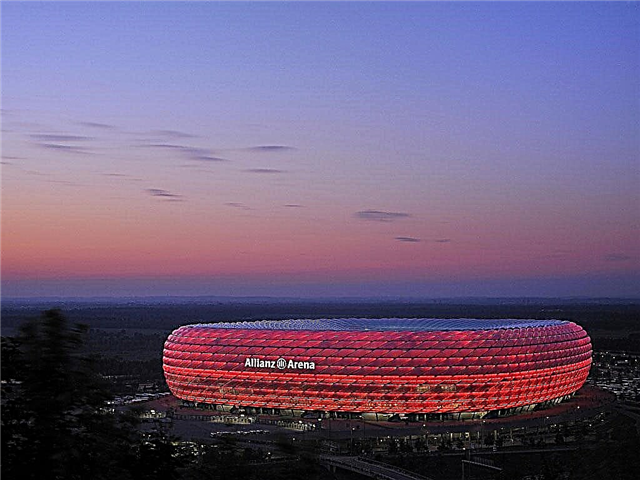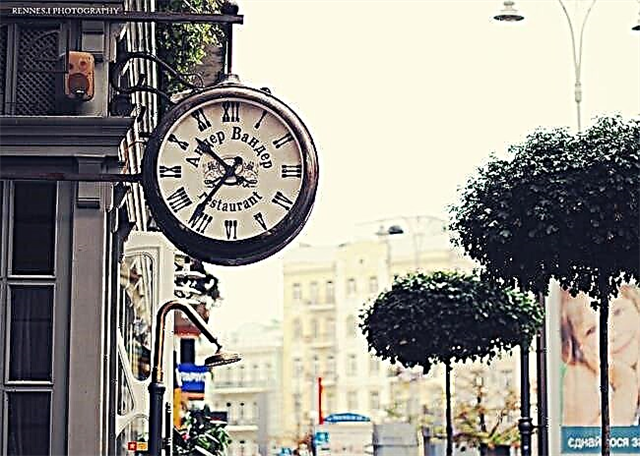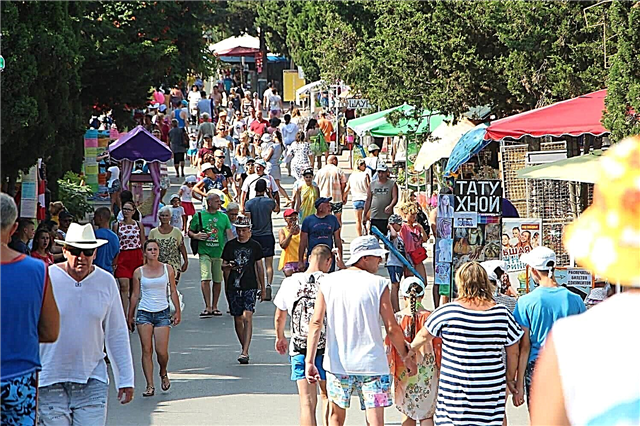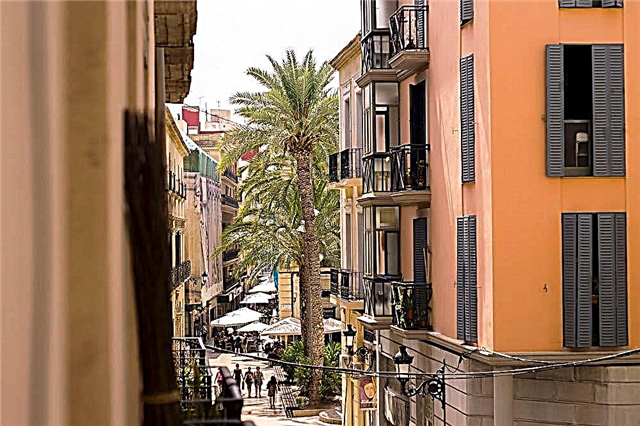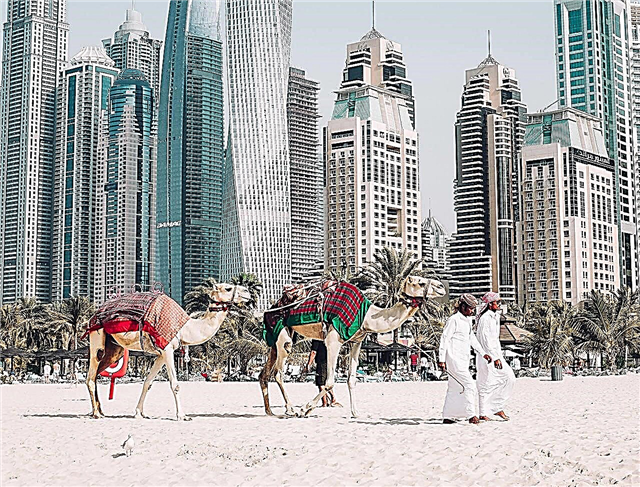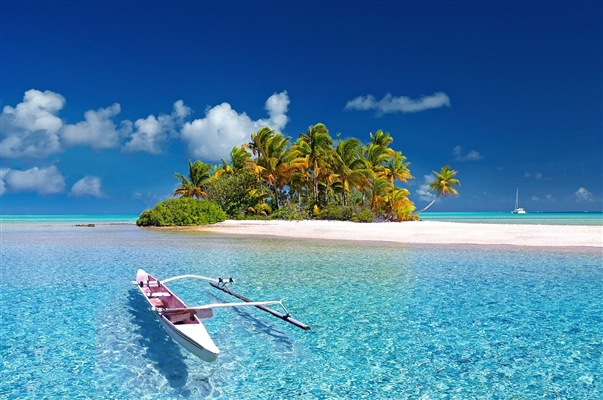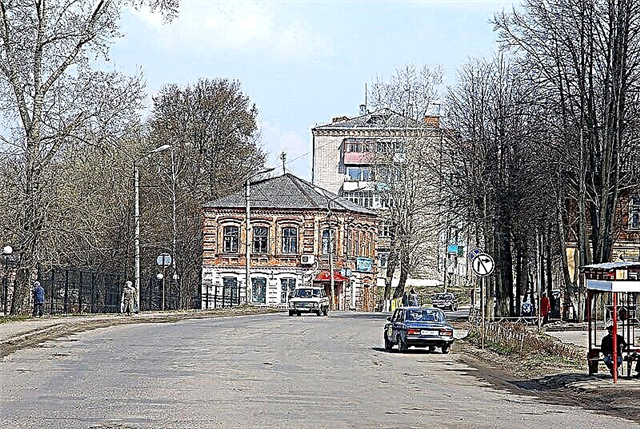The Ivanovo region acquired its modern borders only in 1994, but most of its settlements have been counted for many centuries, have a rich history and therefore are attractive to tourists. Cognitive, pilgrimage, ecological and cruise tourism is developing in the region. The Golden Ring route passes through its territory.
For a long time, the Ivanovo region was considered the center of weaving in Russia. It traces the history of the production of fabrics from primitive spinning wheels and wooden looms to the most modern automated production. Since the 19th century, Shuya, Kokhma, Ivanovo, Kineshma, Rodniki have been considered the centers of textile production. In addition, the region is famous for icon painting and lacquer miniatures of Kholuy and Palekh, hand-painted fabrics and embroidery, jewelry from Privolzhsk, Shuya accordions.
The largest cities of the Ivanovo region
List of the largest cities in terms of population in the region.
Ivanovo
Located on the Uvod River. In 1608 - the first mentions in the annals. Since 1871 it has been a city and textile center of the country. Until 1932 it was called Ivanovo-Voznesensky. A number of machine-building enterprises were built in the 20th century. There is a railway station and an airport. The city is interesting for its preserved industrial architecture, mansions of merchants and manufacturers, ancient temples, avant-garde architecture of the 1920s and 1930s. Included in the Golden Ring route.
Population - 401 505 people (2021).

Kineshma
It stands on the bank of the Gorky reservoir. Known since 1429. City - since 1777. Ranked among the historical cities of the country. There is a railway station and a river port. Mechanical engineering, textile and chemical production are developing. Of interest are the historical buildings of the city, 11 churches and 3 chapels, museums "Russian hut", A. N. Ostrovsky's drama theater, "Kineshemsky felt boot" and others. Boat trips are popular.
Population - 84 thousand people.

Shuya
A city between the Volga and Klyazma rivers. Leads its chronology since 1539. It is known as the center of weaving and soap making. In the list of historical settlements in Russia. Interesting for museums and religious monuments, a special place belongs to the ancient Nikolo-Shartomsky monastery and the ensemble of the Resurrection Cathedral with a 106-meter bell tower. A unique object has been preserved in Shuya - a pavilion with a wagon scale, the only one in the country.
Population - 58 thousand people.

Vichuga
The city was officially founded in 1925, but the first settlements are mentioned in 1482. In the 19th century, the textile industry was actively developing, large dynasties of manufacturers were born. Most of the city's sights are associated with the Konovalov industrialists - factory buildings, a hospital, a nursery, Holy Resurrection Church, Konovalovsky Palace, a park with cedars, etc. There is a railway station.
Population - 35 thousand people.

Furmanov
Located on the Shacha River. It was founded in 1624 as the village of Sereda-Upino. Since the middle of the 19th century it has been the center of the factory industry. Since 1918 - the city of Sereda, in 1941 it was renamed Furmanov. There are enterprises in the textile, machine-building and forestry industries. The birthplace of the writer D. A. Furmanov, a museum was created in his honor. The art gallery, museum of local history, mansions and ancient temples are noteworthy.
Population - 34.3 thousand people.

Teikovo
A city on the Vyazma river. Known since the 17th century. In 1787 a weaving factory appeared. City status - since 1918. Sewing, cotton production, and mechanical engineering are developing. There is a railway station. Notable objects include Ilyinskaya, Nikolskaya churches of the 17th-18th centuries, a number of buildings of the merchant period. Among the natural monuments is Lake Rubskoye, the largest in the region. Rocket troops are based in Teikovo.
Population - 32.8 thousand people.

Kokhma
Located 10 km from Ivanovo, on the Uvod River. The first mentions are in 1619. In the XVIII-XIX centuries, cotton and linen manufactories were built, and Kokhma became a large industrial settlement, and since 1925 - a city. There is a railway station. The textile industry and mechanical engineering are developing. Of interest are the historical museum, the Annunciation Church, the estate of the Yasyuninsky merchants, old factory buildings.
Population - 30.3 thousand people.

Springs
Located on the banks of the Yuksha River. It was founded in 1606 at the Intercession Women's Monastery. Two centuries later, the Krasilshchikovs' weaving factory began to be built, later transformed into the Bolshevik combine, the largest in Russia. There are textile enterprises, a machine-building plant, a garment factory. The healing spring that gave its name to the city has not dried up for over 500 years. A chapel was built over it.
Population - 24.7 thousand people.

Privolzhsk
Located on the coast of the Shacha River. It was founded as the village of Yakovlevskoe in 1485. Privolzhsk received its city status and name in 1938. There is a jewelry factory and a flax factory in the city. The main attractions are ancient religious monuments. On the basis of the St. Nicholas women's monastery, a center for Orthodox pilgrimage has been created, which includes baths, a chapel, a hotel, a church shop, and a coffee shop.
The population is 15.8 thousand people.

Yuzha
A city on the shores of Lake Vasal. The history dates back to 1628. In 1862, a large paper-spinning mill began to be built, and Yuzha became a workers' settlement. In 1925 it was awarded the city status. The spinning and weaving factory is still functioning. Several historic buildings have survived in the city. The village of Kholui is 10 km away, famous for its icon painting and a unique art form - lacquer miniature on papier-mâché.
Population - 12.8 thousand people.

Zavolzhsk
The city on the banks of the Gorky Reservoir is located opposite Kineshma, with which it is connected by a bridge. Since 1954 it has been in the status of a city. The main enterprises are a chemical plant, fiber and knitwear factories. Among the attractions are the city museum and the House of Culture in the former Burnaev-Kurochkin mansions, the ruins of the estate of the astronomer F. Bredikhin, the Epiphany Church of the 18th century.
Population - 10.4 thousand people.

Navoloki
Located on the bank of the Gorky reservoir, 10 km from Kineshma. After the construction of a weaving factory in 1880, it turned into a center for textile production. In 1938 it became a city. The leading enterprises are a cotton mill and a garment factory. In the vicinity, on the territory of the sanatorium im. Stanko, a ski complex with 2 slopes, a ski lift, a skating rink, etc. was built.
Population - 9.5 thousand people.

Yuryevets
Located on the coast of the Gorky reservoir. The history dates back to 1225. Since 1778 - in the status of a city. The city is interesting for ancient temples, several museums, including the cultural center of A. Tarkovsky, the museum-theater of the rag doll, the museum of architects Vesnins. Yuryevets is surrounded by coniferous forests and is considered one of the most ecologically clean regions of the central part of the country.
Population - 8.4 thousand people.

Komsomolsk
A city on the Ukhtokhma river. It began with the power engineering community, founded in 1931 during the construction of the Ivanovo peat power plant. In 1950 it was transformed into a city. In Komsomolsk there are the Spetselectromagnet plant, a spinning mill, and a timber industry enterprise. Local attractions include the Ivanovskaya State District Power Plant, the Church of the Nativity of Christ, and several 18th century churches in the vicinity.
Population - 8.4 thousand people.

Puchezh
Located on the coast of the Gorky reservoir. Founded in 1594. In the 50s of the last century, during the construction of the Gorky hydroelectric power station, the old city was completely flooded by a reservoir, and the new one was rebuilt on a higher place. The enterprises of the light and food industries predominate. Linen products with embroidery are popular.There are few attractions - war memorials, monuments, a museum of local lore.
Population - 7 thousand people.

Gavrilov Posad
A city on the Irmes river. Known since 1434. The history of the development of the settlement is associated with the sovereign stud farm, founded on its territory during the reign of Ivan the Terrible. In 1789, it received the status of a city. There is a textile factory, a horse farm, and a railway station. The main attractions are the temple ensemble of the Ilyinsky courtyard of the Vvedensky monastery, the buildings of the palace stud farm and the fire station.
Population - 5.7 thousand people.

Plyos
Located on the Shokhonka River. It was first mentioned in 1141. City - since 1778. Listed in the list of historical settlements. The cultural and tourist center of the region, there is no industry. It is famous for its ancient churches, the most ancient are the Assumption Cathedral and the Resurrection Church of 1698-99. There are many interesting museums - landscape, old Russian family, house-museum of I. I. Levitan, etc. There are several art galleries.
Population - 1800 people.

PGT Lezhnevo
It is located 25 km from Ivanovo, on the Ukhtokhma river. Founded in 1239. Since 1925 it has had the status of a town. It appears in the list of historical Russian cities. There are breweries and dairy factories, woodworking enterprises. In the village and its surroundings, the preserved temples of the 18th-19th centuries, the building of the Zemsky Hospital, the Monument to the Perished Compatriots with the Alley of Heroes, the military cemetery of the Second World War are of interest.
Population - 7.8 thousand people.

Village Old Vichuga
Located on the Vichuzhanka River, 5 km from the town of Vichuga. The first written records of the settlement date back to 1482. The status of the town - since 1938. The objects of cultural heritage in the village include the estate of the Tatishchev family of the early 19th century with a park and an artificial pond, the buildings of the oldest spinning and weaving factory in the area in 1858, the Sergiev-Radonezh Church of 1828.
Population - 4.8 thousand inhabitants.

PGT Palekh
Located on the Paleshka river, the ancient center of lacquer miniature and icon painting. It arose in the 9th century and was first mentioned in the 17th century. Since 1947 - town. The stitching factory and the Russian lacquer miniature enterprise are in operation. The local art school trains masters of Palekh art. Notable are the Ilyinsky and Holy Cross temples of the 18th century, the Palekh art museum, house-museums and artists' workshops.
Population - 4.8 thousand people.



